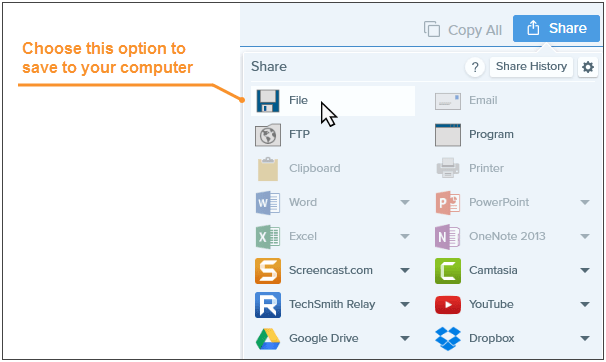We are bombarded with live video from Facebook, live streaming webinars, and streaming on YouTube.
How are we supposed to process it all in real time, especially when it may be gone in the blink of an eye?
More importantly, how can you capture this live streaming content so it’s not all lost in the internet’s void?
Don’t let the internet run your schedule.
You can easily capture or record streaming video and share it with your friends, your coworkers, or save it for later viewing. It’s easy, it’s fast, and it will bring order to a chaotic media landscape. Here’s how to get started:
1. Find a Desktop Capture Tool
The first thing you’ll want to to is find a good screen recorder and screen capture tool.
There are numerous devices that will allow you to record your work area screen. I utilize TechSmith's Snagit which is extraordinary to record short-structure video. Or on the other hand I'll utilize Camtasia to record longer-structure content.
A Word of Caution: There are some free (or freemium) variants of projects that permit you to record video from your screen, yet be wary — a portion of these are sprinkled with spam programming or might be selling your data.
2. Adjust your Recording Settings
Once you have your recorder, try loading it up and get used to the different settings.
A few recorders will have the Image and Video record choice, so ensure that you realize which will be which when recording web based video.
We likewise suggest you test your sound. Snagit and Camtasia will record the sound from your PC insofar as have the right sound source chose. Select the sound source you need to catch, and afterward test it to ensure it records appropriately.

In the wake of choosing the chronicle region to record, the screen recorder toolbar shows up under the chose region. You can choose to record receiver sound or framework sound with a video recording.
In the event that you need to record online recordings, you'll most likely need to both video and sound of the video transfer. For that, ensure you begin recording the framework sound.
Framework sound is the sound from your PC, for example,
application cautions, sound playing from your speakers, and so on
To record framework sound, click the System Audio button on the Video Recording toolbar. Framework sound chronicle is empowered when the catch is green.
3. Select an Area to Record
Click the Capture button and then select your entire screen, a particular window, or a custom region.
Here is an example of a NASA live stream that I recorded earlier:

Instead of selecting the the entire browser window, I simply captured the streaming video section.
4. Hit Record
After you make the selection, click the record button to start.
While recording, delay and resume whenever, switch between the webcam and screen recording with the webcam button, and even change sound settings.
At the point when you're finished account, click the stop catch to stop the chronicle.
5. Save and Upload
Once you have your video, you can save it to the standard mp4 format, and either save it to your computer or upload to share with your friends!

Video capture can help you make a little sense of the chaos you may feel. One of my favorite uses is recording a Google Hangout, and there are a lot of other great uses for video capture, too.
Wrapping up
In this post, we have shared countless ways to help you record streaming online. Luckily more streaming options are available once you download a paid version of the software. But if your videos revolve around simple usage, then it’s fine to use a free tool with a watermark.
Which method do you prefer the most? Let us know down in the comment section.



Top comments (0)